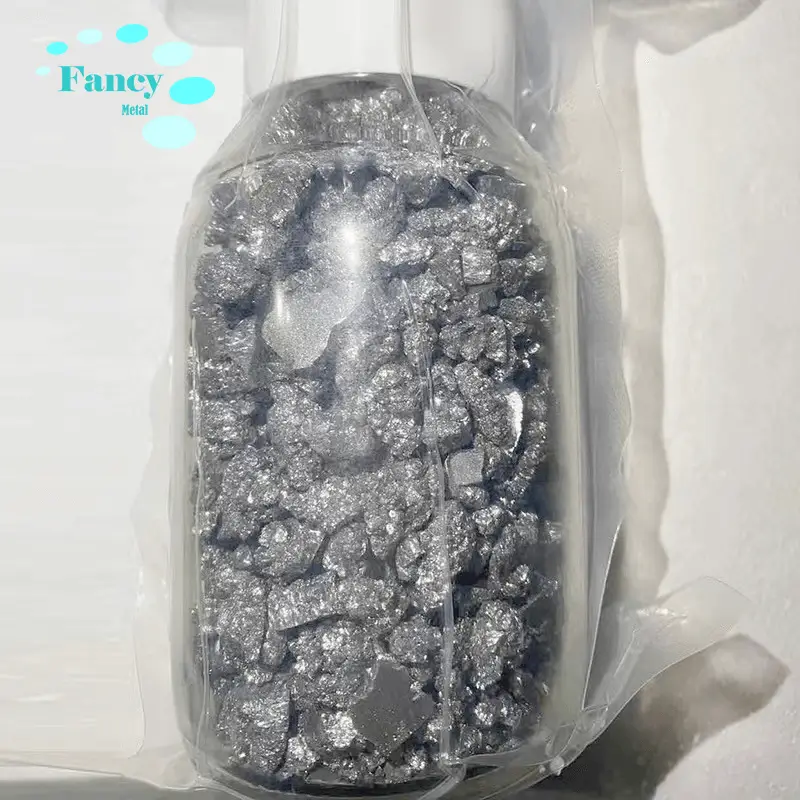Fancymetal offers high purity (customizable) metal products, as well as oxides, product shapes, foils, plates, wires, tubes, rods, powders and a variety of custom shapes.
We also have other arsenic products:
Arsenic
Arsenic Alloys
Arsenic is a metalloid element, with three allotropes: gray arsenic (metallic arsenic), yellow arsenic and black arsenic. Gray arsenic is the most stable at room temperature, has metallic properties, is brittle and hard, and is insoluble in water.
Applications:
✔ Organic and inorganic arsenic pesticides are used for insecticides, sterilization, weed control and snail control, etc.
✔ Arsenic is used for doping semiconductors of solid-state electronic components, such as gallium arsenide (GaAs) and indium arsenide (InAs).
✔ GaAs, as a representative of the second generation of semiconductors, is an intermetallic compound formed by the combination of gallium and arsenic in an atomic ratio of 1:1. It is widely used in diodes, cathode ray tubes, microwave ovens and solar cells, etc.
✔ Cadmium germanium arsenide (is a chalcopyrite semiconductor with excellent nonlinear optical properties. Therefore, cadmium germanium arsenide crystals have broad application prospects in the field of optoelectronics and have attracted much attention.
✔ Arsenic has both metallic and non-metallic properties. It can form arsenic alloys when combined with metals, and arsenic alloys can effectively improve the properties of the original alloy.
Storage and transportation:
Store in a cool, ventilated warehouse. Keep away from fire and heat sources. The relative humidity in the warehouse should not exceed 80%. The package must be sealed and must not be exposed to moisture.
Advantages:
✔ Strict quality control of raw materials, process control and pre-delivery processes.
✔ Strong technical capability makes it a reliable long-term supplier.
✔ Technical support: 24 hours technical support by email or phone.
History:
In the 10th century BC, ancient China had already used orpiment as a pigment.
In 340 BC, the Greek Aristotle recorded in his works that substances such as realgar were found in mines, and that cockscomb stone could be dissolved in water to poison birds and beasts.
In the 8th century, the ancient Greek scientist Hippocrates used realgar and orpiment in medicine to treat ulcers.
In the 13th century, the German alchemist Albert Magnus used alchemy to produce elemental arsenic for the first time by heating arsenic sulfide and soap.
In the 18th century, Swedish chemist and mineralogist Brandt clarified the relationship between arsenic and arsenic trioxide and other arsenic compounds.

